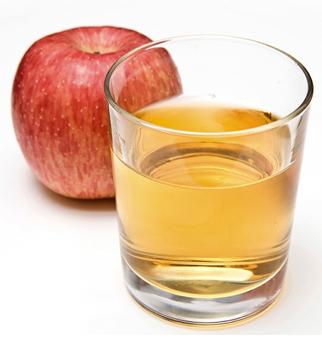Translate this page to any language by choosing a language in the box below.
 If you have been following news reports about arsenic foods, you've probably seen
Dr.Oz's report about arsenic in apple juice
andConsumer Reports studies about high levels of arsenic rice, and the FDA's
proposal to limit the amount of arsenic in apple juice. But what does it
all mean? Is it safe to drink apple juice? And half the world's population
eats rice as their basic food each day. Are they all dying from arsenic
poisoning?
If you have been following news reports about arsenic foods, you've probably seen
Dr.Oz's report about arsenic in apple juice
andConsumer Reports studies about high levels of arsenic rice, and the FDA's
proposal to limit the amount of arsenic in apple juice. But what does it
all mean? Is it safe to drink apple juice? And half the world's population
eats rice as their basic food each day. Are they all dying from arsenic
poisoning?
This page presents an explanation of the issues, links to the reference sources and a bottom line conclusion.
A known carcinogen, inorganic arsenic also has been associated with skin lesions, developmental effects, cardiovascular disease, neurotoxicity, and diabetes. Chronic arsenic exposure can initially cause gastrointestinal problems and skin discoloration or lesions. Signs of chronic low-level arsenic exposure can be mistaken for other ailments such as chronic fatigue syndrome.
Inorganic arsenic, the sum of arsenite (As+3) and arsenate (As+5), is generally considered more toxic than organic arsenic, and some organic species in food (such as arsenobetaine, commonly found in seafood) are considered nontoxic (
Arsenic is a naturally occurring substance and naturally finds its way into many foods, from apple juice and rice to meats like chicken, but usually in trace amounts.
Older pesticides (now banned) contained arsenic, which led to a build-up of arsenic in soils, which can still find its way into foods. Arsenic was also used in a preservative for pressure-treateing wood (that was baned in 2003) , which is commonly used for decks and playground equipment. Consumer Reports has an interactive map of the known contamination of groundwater here.
Imported foods, from countries with no or lax standards or poor enforcement, like China (from which much apple juice is imported to the U.S.) also accounts for the presence of some arsenic in our food. See this story "Why Americans Should Worry About China's Food Safety Problems " in the - Wall Street Journal, May 21, 2013.
See this page for a discussion of Arsenic in rice
See this page for a discussion of arsenic in apple juice
Many of the references are found by links throughout the article above, but are present ehere for clarity:
Ways to save money AND help the environment:
Eat healthier AND save money: Instant Pot Duo Crisp 11-in-1 Air Fryer and Electric Pressure Cooker Combo with Multicooker Lids that Fries, Steams, Slow Cooks, Sautés, Dehydrates
Save water AND money with this showerhead adapter, it lets the water flow until the water is hot, then shuts off water flow until you restart it, ShowerStart TSV Hot Water Standby Adapter
Protect your health with these:
Mattress Dust mite-Bedbug protector, 100% Waterproof, Hypoallergenic, Zippered
Handheld Allergen Vacuum Cleaner with UV Sanitizing and Heating for Allergies and Pet, Kills Mite, Virus, Molds, True HEPA with Powerful Suction removes Hair, Dander, Pollen, Dust,
Immune Support Supplement with Quercetin, Vitamin C, Zinc, Vitamin D3
GermGuardian Air Purifier with UV-C Light and HEPA 13 Filter, Removes 99.97% of Pollutants
5 Stage Air Purifier, Features Ultraviolet Light (UVC), H13 True Hepa, Carbon, PCO, Smart Wifi, Auto Mode, Quiet, Removes 99.97% of Particles, Smoke, Mold, Pet Dander, Dust, Odors
Interesting Reads:
THE PREPPER'S CANNING & PRESERVING BIBLE: [13 in 1] Your Path to Food Self-Sufficiency. Canning, Dehydrating, Fermenting, Pickling & More, Plus The Food Preservation Calendar for a Sustainable Pantry
The Backyard Homestead: Produce all the food you need on just a quarter acre! Paperback
The Citizens' Guide to Geologic Hazards: A Guide to Understanding Geologic Hazards Including Asbestos, Radon, Swelling Soils, Earthquakes, Volcanoes
The Uninhabitable Earth: Life After Warming
Book: The Sixth Extinction: An Unnatural History Paperback